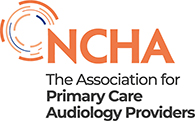At the NCHA we work in collaboration with policymakers and commissioners like you to help tackle unmet hearing needs and health inequalities across the UK. In the section below we provide an overview of hearing needs and evidence-based and cost-effective solutions.
If you have any questions about hearing needs or hearing services please email us at [email protected].
Hearing loss - a public health priority
Unaddressed hearing loss is now recognised as a major and growing public health problem by NICE, the NHS, local and international public health experts, and the World Health Organization [1]. This is because unsupported hearing loss is associated with communication difficulties and an increased risk of:
- social isolation and loneliness
- depression
- cognitive decline
- dementia
- other mental health issues [2]
Over 11 million people in the UK have a hearing loss and this is set to increase to 13.8 million people by 2030 as our population grows older. This is because age-related hearing loss is by far the single biggest cause of hearing loss in the UK.
The graph below shows how hearing loss increases exponentially with age because of age-related hearing loss.
The scale and impact of hearing loss means that addressing unmet hearing needs should form part of any active ageing strategy. Age UK and the NHS ran such an initiative in 2015 and encouraged people to get their hearing tested and try aids if they had a hearing loss [6].
Unfortunately, despite many attempts like these to meet hearing needs, there has never been a coordinated and concentrated effort to commission sufficient capacity to tackle unmet hearing needs in the UK (see our history of hearing care to learn more).
Other barriers to addressing this public health challenge include negative stereotypes about ageing, hearing loss and hearing aids at all levels of society. This in turn has a negative impact on the success of preventative 'healthy and active ageing' strategies that aim to tackle hearing loss for the serious public health challenge it has become.
The good news is that based on an independent review of the clinical and economic evidence by the National Institute for Health and Care Excellence (NICE), the early diagnosis and management of hearing loss is both clinically and cost effective [3]. We also know that public perceptions are slowly changing as modern hearing aids and headphones are normalising the use of visible hearing technologies.
NICE’s evidence shows hearing aids help improve quality of life and are now one of the most cost-effective interventions the NHS provides [3].
Today we know more than ever about the scale and impact of hearing loss and what to do about it. There is now a great opportunity to finally tackle the public health challenge unaddressed hearing loss presents and we can do this using evidence-based and cost-effective interventions.
To do more to prevent the adverse impacts of hearing loss, the NCHA supports improving awareness of hearing loss and access to audiology services by:
- including age-related hearing loss as a key pillar in any ageing well strategy
- public health campaigns about the benefits of early diagnosis and management of hearing loss
- improving access to audiology services*
- providing hearing care closer to home in primary care and community-based settings
- making people more aware of their options, so they can choose to access NHS or self-funded care based on their preferences.
Addressing hearing loss in this way will help tackle what is now a major and growing public health issue for our longer living and longer working population. If you would like to improve access to or the quality of hearing care services in your area, contact us by emailing [email protected].
We have created the following resources specifically to support policymakers and commissioners access the information they need to understand and take action on hearing loss:
- Hearing and hearing loss - the basics
- Causes of hearing loss
- Risk factors for hearing loss
- Prevention
- Tinnitus and other conditions
- NICE guidelines and standards
- Guidance and policy resources
- Country specific data, guidance and support
We will keep adding resources to help key decision-makers like you understand the full breadth and depth of hearing care services and what hearing care professionals can do to meet population needs in a sustainable way.
Policymakers and commissioners that would like to access additional information and data can also contact us directly by emailing [email protected].
Updates
Originally published: September 2020
Reviewed: NA
Next review date: September 2021
Reference and notes
* This might for example include designing audiology services like other primary care services so that a GP referral is not required to access NHS audiology.
Adults funding their own care in the UK do not need a GP referral letter to access audiology services, yet most NHS funded patients do. The fact that all service users with the ability to pay can access private audiology services without a GP referral demonstrates the status quo in the NHS pathway of requiring a GP referral is not based on clinical evidence but historical norms.
In the past the NHS pathway also required an ENT visit before accessing audiology, which meant somebody with the ability to pay had direct and open access to audiology support but NHS patients would need to see a GP, then ENT and then be referred to an audiologist. Fortunately, the need for all adults to see ENT first was largely addressed in the 1990s with the national rollout of direct access audiology. Reviews of outpatient services finding that direct access to audiology for hearing aids is a clear benefit for patients and the NHS. For example Winpenny et al. state it bypasses the need for "unnecessary specialist referral" and that "patients for whom a hearing aid is needed can be referred directly to an audiology clinic without first being seen by an ear, nose and throat (ENT) surgeon [...]making this a highly cost-effective alternative to consultant referral" [7]
With GPs under significant pressure some NHS regions across the UK, including in Coventry and Rugby, have implemented open access audiology models of care so a GP letter is no longer required if adults want to access audiology services locally. Commissioners in these regions generally report improved access, high patient satisfaction, reduced costs and saving GP time.
[1]
NHS England, the Local Government Association, the Association of Directors of Public Health, Public Health England et al. 2019, Joint Strategic Needs Assessment Guidance. https://www.england.nhs.uk/wp-content/uploads/2017/09/joint-strategic-needs-assessment-guidance-jul19.pdf
NICE, 2018, Hearing Loss in adults: assessment and management, methods, evidence and recommendations https://www.nice.org.uk/guidance/ng98/evidence/full-guideline-pdf-4852693117
Livingston et al, 2017, Dementia prevention, intervention, and care. The Lancet Commissions. http://www.thelancet.com/journals/lancet/article/PIIS0140-6736(17)31363-6/fulltext accessed 11 October 2019
World Health Organization, Prevention of deafness and hearing loss, World Health Assembly resolution https://apps.who.int/gb/ebwha/pdf_files/WHA70/A70_R13-en.pdf
[2]
NHS England, the Local Government Association, the Association of Directors of Public Health, Public Health England et al. 2019, Joint Strategic Needs Assessment Guidance. https://www.england.nhs.uk/wp-content/uploads/2017/09/joint-strategic-needs-assessment-guidance-jul19.pdf
NICE, 2018, Hearing Loss, Hearing loss in adults: assessment and management, NG98, full guideline https://www.nice.org.uk/guidance/ng98/evidence/full-guideline-pdf-4852693117 accessed 11 October 2019
Livingston et al, 2017, Dementia prevention, intervention, and care. The Lancet Commissions. http://www.thelancet.com/journals/lancet/article/PIIS0140-6736(17)31363-6/fulltext accessed 11 October 2019
[3]
NICE, 2018, Hearing Loss, Hearing loss in adults: assessment and management, NG98, full guideline https://www.nice.org.uk/guidance/ng98/evidence/full-guideline-pdf-4852693117 accessed 11 October 2019
An independent economic valuation by NICE shows that hearing aids are very cost-effective and a fraction of the cost-effectiveness threshold that NICE usually uses to approve the use of new technologies. NICE analysed the use of hearing aids for people with age-related hearing loss and found that early intervention with the provision of two hearing aids remained cost-effective over a period of 10 years and as a result NICE recommends early diagnosis and treatment for hearing loss as the benefits significantly outweigh the costs. You can review the full economic analysis in Appendix N https://www.nice.org.uk/guidance/ng98/evidence/appendices-as-pdf-4852693118
[4]
Estimates of hearing loss of ≥25dB HL in better ear in children are not readily available. The data in the table only provides estimates and gives a range due to the uncertainty associated prevalence of hearing loss in childhood. Sources: M Bond et al. 2009. The effectiveness and cost-effectiveness of cochlear implants for severe to profound deafness in children and adults: a systematic review and economic model. Health Technol Assessment 2009.DOI: 10.3310/hta13440; CDC international collection of prevalence of hearing loss - http://www.cdc.gov/ncbddd/hearingloss/data.html accessed 21 February 2016; and NDCS estimates of 3 in 1000.
[5]
Prevalence of hearing loss of ≥25 dBHL in adults (Source: NHS England, Hearing Loss Data Tool) https://www.england.nhs.uk/publication/joint-strategic-needs-assessment-toolkit/, in NHS England et al. 2019 Joint Strategic Needs Assessment Guidance, https://www.england.nhs.uk/wp-content/uploads/2017/09/joint-strategic-needs-assessment-guidance-jul19.pdf. This resource was co-produced by Action on Hearing Loss and the NCHA, with input from public health experts
[6]
Age UK and NHS, 2015, A practical guide to healthy ageing
[7]
Winpenny, Céline Miani, Emma Pitchforth, Sarah Ball, Ellen Nolte, Sarah King, Joanne Greenhalgh and Martin Roland, Outpatient services and primary care: scoping review, substudies and international comparisons, Health Services and Delivery Research, Volume 4 Issue 15 May 2016, ISSN 2050-4349

 Your hearing and aural health
Your hearing and aural health  Commissioners and Policymakers
Commissioners and Policymakers  Member support and guidance
Member support and guidance News and views
News and views
 Hearing map
Hearing map

